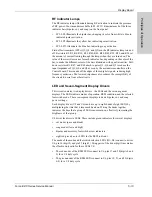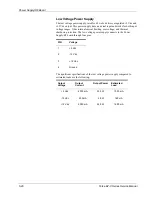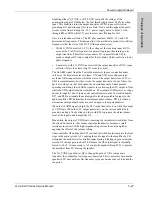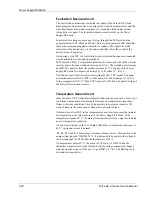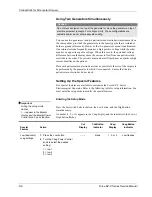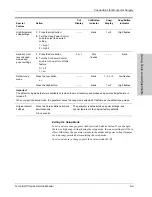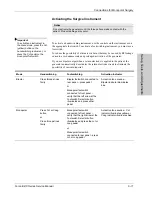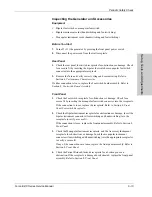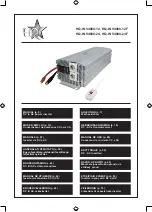
Power Supply/RF Board
5-26
Force EZ-C Series Service Manual
Oscillator
The oscillator circuit consists of a 74HCT4060 oscillator/divider (U30) using a 5
MHz ceramic resonator as the frequency determining element. The output of the
oscillator connects internally to the input of a counter/divider chain. The Q6
output of the divider yields a 78.13 kHz square wave, applying it to the input of
two 4081 AND gates (U27A and U34A) for buffering and gating with the
ISO_TST\ signal. The software system uses the ISO_TST\ signal to shut off the
IsoBloc supplies for safety testing.
Power Supply
The two 4081 AND gates drive two VN10KM FETs (Q9 and Q10) that connect
to transformers T9 and T11. The system operates the transformers in a flyback
mode with their associated 6800 pF capacitors (C133 and C139). The voltages at
the secondaries of the two transformers, half-wave rectified and referenced to two
separate isolated grounds, provide –8 V for operating the isolated activation
circuitry.
Optoisolators
The isolated power supply voltages produced by the IsoBloc power supplies
connect to the Active output terminals of the generator (J15, J22, and J24).
Sensing Active-to-Cut or Active-to-Coag switch closure in a handswitching
accessory accomplishes handswitch activation. Current limiting resistors, in
series with LEDs in the optoisolators, cause the LEDs to light to a controlled
degree while not excessively loading the IsoBloc power supply. The photo-
transistor in the optoisolator detects this light. The photo-transistor, which
connects to an input to an 82C55 expansion port in the main microcontroller
circuit, turns on, pulling the associated input low. The software interprets this as
an activation request, and activates the generator after using ISO_TST\ to verify
the validity of the activation request.
Audio Circuit
The audio system enunciates the presence of RF output and provides an auditory
indication of alarm conditions. This system consists of the following components:
•
an audio oscillator
•
tone control signals
•
a volume control potentiometer
•
an audio amplifier
•
a speaker
Pulling UP_TONE\ (from the Control board) or RF_TONE\ (from the Power
Supply/RF board) low enables the audio oscillator. Diodes D1 and D2 provide a
wired-OR function for the two signals. Since UP_TONE\ and RF_TONE\ are +5
V (logic level) signals, resistors R24 and R49 divide the +12 V audio power
supply down to about 4.85 V to prevent D1 and D2 from sourcing current into
their logic level drive signals. R25 and C31 provide filtering for the resultant
wired-OR output.


